Western countries, particularly the United States, are home to a multitude of pet owners who take dog ownership to the next level. In fact, a majority of these individuals prefer being called fur-momma/fur-papa… just like me! Yup, we pamper our pooches so much that outsiders would think we are pushing a human baby in our strollers. But did you know most of the ultimate lap dogs are from China?
While China is better known for pandas and dragons, she is also the home to some of the most adorable dog breeds. Lion-like, bear-faced, silky straight, hairless — there is a dog breed in China that will appeal to every fur-parent! Without further ado, here are 10 of the most popular pooches from China.
The 10 Great Dogs of China
1. Pekingese
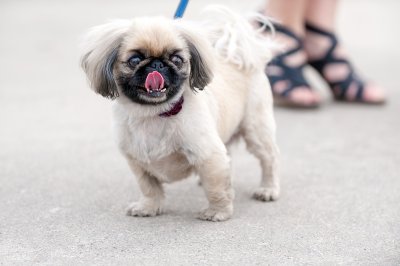
The smooshed-face Pekingese is one of the most famous dog breeds in China. The breed was so highly regarded that it was named after China’s capital city Peking, which we know today as Beijing. According to Chinese legend, the pooch had initially been a lion that the gods shrunk down to deter its fierceness. Interestingly, the little canines are oblivious of their size and act as brave as a lion.
The Pekingese also earns its nickname “lion dog” because of its signature golden coat. While gorgeous, you need to brush its fluffy fur at least an hour per week to ensure it looks prim as it was. However, don’t expect a Pekingese to laze on your lap while brushing. This pooch is here to prove that not all toy dogs are lap dogs! This whiff of arrogance probably has something to do with their history.
Back in the 8th century, you could get a death sentence for owning a Pekingese if you weren’t royalty. Only those from the Imperial Family from the Tang Dynasty could own one. Nowadays, anyone, regardless of social status, can happily own a Pekingese as a pet. According to the American Kennel Club, British invaders plundered the Imperial Palace in the 1860s and brought the regal dogs to England. From then on, the smooshed-face pooch was introduced to the Western world at large.
Although the Pekingese is a proud, stubborn pooch, you can rest assured that this little canine has an amiable demeanor towards its family.
- Weight: 3.2 – 6.4 kg (both sexes)
- Height: 15 – 23 cm (both sexes)
- Temperament: intelligent, opinionated, and aggressive towards strangers
- Lifespan: 12 – 15 years
2. Pug

Having a Pug is like asking a clown to dress up as a pooch and have him stay at your home for good. Charming and mischievous, these cuties are always the life of the party! No wonder celebrities like PewDiePie, Jessica Alba, and Paula Abdul love these pooches so much. However, Pugs had already lived a life of luxury long before they became famous Hollywood sidekicks.
During the Han Dynasty in 206 BC, emperors and the ruling nobility treasured Pugs and gave them fancy accommodations. These cutie pies had already existed in 400 BC, but the world knew nothing of the breed until sailors smuggled them to Europe in the 1800s. Since then, Pugs took the world by storm and were recognized by the American Kennel Club in 1885.
Interestingly, Pugs look like pint-sized Bullmastiffs with a pushed-in nose. While cute, this feature causes breathing problems. That is why Pugs might not be the best hiking companions. On the bright side, these pooches make great couch buddies and bed warmers. Pugs are also docile and social, making them an excellent choice for families with kids and other pets. They are also comfortable in any setting as long as they can follow their family members around.
Be warned that Pugs are gas machines, and they don’t understand the concept of personal space at all! These slobbers live to eat, and because they can’t exercise much, the greedy eaters can get obese quite fast. So, keep your snacks out of your Pug’s reach.
- Weight: 6.35 – 8.16 kg (both sexes)
- Height: 30 cm (male), 25 cm (female)
- Temperament: cheerful, clingy, and comical
- Lifespan: 12 – 15 years
3. Kunming Wolfdogs
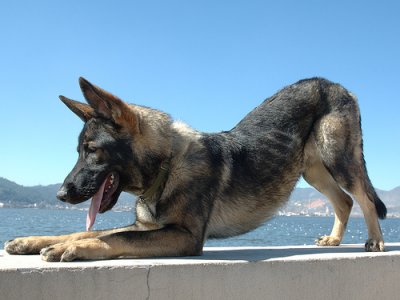
Kunming Wolfdogs are the Chinese counterparts of the German Shepherd. Much like the American police K9 units, these canines have been trained to perform a variety of police and military work, such as detecting bombs and rescuing casualties. These dogs’ willingness to learn allows them to ace in task training.
The Kunming Wolfdog was developed in the early 1950s to address the need for military dogs in the Yunnan province of southern China. The exact list of breeds used for its gene pool remains unclear, but the German Shepherd and some wolf hybrids are known to play a crucial part. By 1988, the Chinese Public Security Bureau officially recognized the Kunming Wolfdog as a breed. These canines were used as military, police, fire, and rescue dogs thereafter.
Kunming Wolfdogs share many physical attributes with the German Shepherd, except that they stand taller in the back. Their behavioral traits are also similar. Both are extremely intelligent, highly curious, and remarkably confident. If you are willing to put in the time to socialize, train, and exercise a Kunming pup, then he could be the family pet you are looking for.
- Weight: 30 – 38 kg (both sexes)
- Height: 64 – 68 cm (both sexes)
- Temperament: intelligent, self-assured, and protective of their family
- Lifespan: 12 – 14 years
4. Chinese Shar-Pei
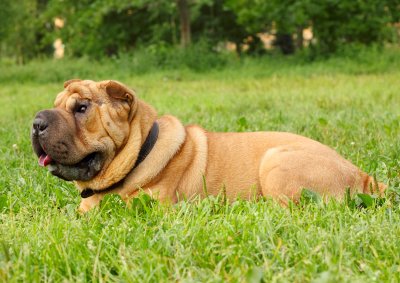
It is believed that the Shar-Pei has roots dating back to 200 BC, where it had lived for centuries in the southern provinces of China. The name Shar-Pei translates to “sandy skin,” which refers to the dog’s rough skin and bristly coat. The said breed was initially bred for fighting. Its wrinkly loose skin is a strategic advantage, as it prevents the canine’s opponent from biting through its vital organs. Shar-Peis also have a curved jaw that could lock a deadly bite.
Chinese Shar-Peis skyrocketed to fame in the 70s when Matgo Law, a kennel owner from Hong Kong, wrote a plea to help save the breed, as though it were becoming extinct. Dog lovers responded, and the Chinese Shar-Pei became all the rage. With profit as a primary motivation, many of these wrinkly dogs were exported to the United States. Some of them were inbred and crossbred with bulldogs to increase the wrinkling, giving the impression that a Shar Pei is better with more wrinkles.
The Chinese Shar Pei’s folds should diminish as the dog ages, leaving pronounced wrinkling only around the forehead and withers. Unfortunately, inbreeding and crossbreeding led to a new generation of Shar-Peis that look like sad little hippos trapped in a potato sack. Many of today’s Shar-Peis suffer skin diseases, entropion, and meatmout. Thankfully, efforts have already been made to track down purebred Shar-Peis in China to restore genetic diversity, as well as the health of the breed.
- Weight: 25 – 30 kg (male), 18 – 25 kg (female)
- Height: 46 to 56 cm (both sexes)
- Temperament: loyal, independent, and unfriendly to strangers
- Lifespan: 9 – 11 years
5. Chongqing
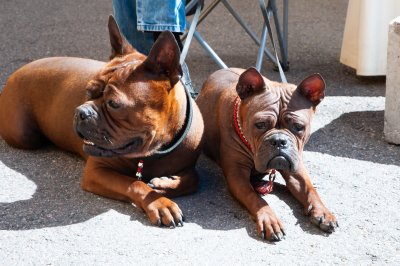
Have you heard of the Chongqing dog? Also known as “bamboo ratters” and East Sichuan City Dogs, these fantastic canines have stood against the test of time. Ancient statues from the Han Dynasty provided evidence that the said breed has existed since at least 2,000 years ago. It would have been tragic if the breed faced extinction. However, it almost did when the communist party took over and when the SARS epidemic hit China.
Chongqing dogs are rare. Nevertheless, the Chongqing remains a special dog breed in the heart of China. What makes these muscular canines unique is that they are a paradox of sorts. The Chongqing is like the Chinese counterpart to the Dogo Argentino. The fierceness and attentiveness of the Chongqing dogs make them ideal hunters and guardians of the home. However, they are very loving towards their family members.
- Weight: 20 – 25 kg (male), 15 – 20 kg (female)
- Height: 45 cm (male), 37.5 cm (female)
- Temperament: protective, loyal, and potentially aggressive
- Lifespan: 17 – 18 years
6. Shih Tzu
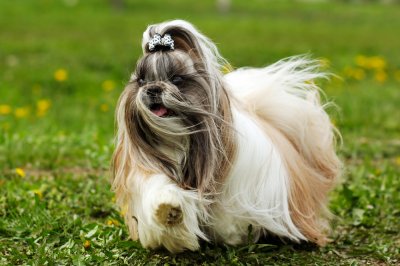
During the time of early Buddhism, Tibetan monks bred many lion-like dogs to create tiny replicas of the lion that accompanies the Tibetan Buddhist God of Learning. Among these was the Shih Tzu. The name Shih Tzu translates to “little lion.” This poof ball also goes by the moniker “Chrysanthemum dog” because of the way its hair flows out of its nose and face in all possible directions.
By the end of the 17th century, the Dalai Lama brought a trio of lion-like pooches as gifts to emperors during his visit to China. Experts say that the Shih Tzu stemmed from a cross between these three dogs. Back then, Shih Tzus were much loved by the elite families of the Ming Dynasty. Chinese royals refused to sell, barter, or give their pooches away. The pampered lap dogs were even allowed to sleep on royal beds. After all, their thick and long silky ‘dos made them the perfect bed warmers.
The breed got almost wiped out when the Communist party took over. Luckily, dedicated dog fanciers were able to rebuild the entire line out of the seven males and females that survived. By 1930, Shih Tzus reached European shores, and they also arrived in the United States shortly after World War II when the returning members of the US military acquired them from Europe and Asia. In 1969, the American Kennel Club recognized the Shih Tzu in the Toy Group.
Although Shih Tzus rank among the dumbest dogs, these canines make lovely companions. Their popularity arises from the fact that these little lions love to totter at their owners’ feet and sleep on their laps. Shih Tzus are comfortable in any setting as long as their families are always around.
- Weight: 4–7.25 kg (male), 4–8.10 kg (female)
- Height: 20–28 cm (male), 20–28 cm (female)
- Temperament: affectionate, outgoing, and friendly
- Lifespan: 10 – 16 years
7. Chow Chow
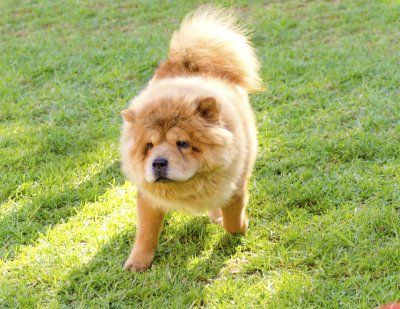
The Chow Chow’s early beginnings are shrouded in mystery, but it is believed that the breed originated in the Arctic Asia roughly 3,000 years ago. Ancient artifacts, which can be traced as far back as the 11th century, have confirmed this theory as well. How the pooches reached Tibetan monasteries and northern China remains unclear. Some insist they were brought by the Mongols.
Given their size and strength, the Chow Chows of old fulfilled the role of a hunter, sled-puller, and guard dog. The emperor of the Tang Dynasty adored Chow Chows so much that he owned 5,000 of these dogs. Nowadays, you can spot many of these teddy bears in the neighboring regions of Canton, where they are called Songshi Quan, which translates to “puffy lion dog.”
Aside from its lion-like mane and signature teddy bear face, Chow Chows have a bluish-black tongue. According to Chinese legend, Chow Chows licked the sky during its creation, and thus, they have painted their tongues blue. But here at Pet Comments, we believe Chow Chows are four-legged nimbus clouds that fell down from the sky! These poof balls are quite high maintenance, but that is the trade-off for having such a cute and cuddly pooch.
However, Chow Chows are a bit snobbish. These aristocratic canines won’t play cute unless you are their favorite person. Oftentimes, Chow Chows are viewed as a one-person pooch, and they are independent dogs to boot. These four-legged nimbus clouds have a high tolerance for being alone. Nevertheless, that doesn’t mean they don’t appreciate family time. Chow Chows are devoted as any other breed, which makes them excellent guard dogs.
- Weight: 18 – 41 kg (male), 16 – 39 kg (female)
- Height: 43 - 56 cm (both sexes)
- Temperament: protective, aloof with strangers, and can be aggressive with other dogs
- Lifespan: 9 – 15 years
8. Tibetan Mastiff
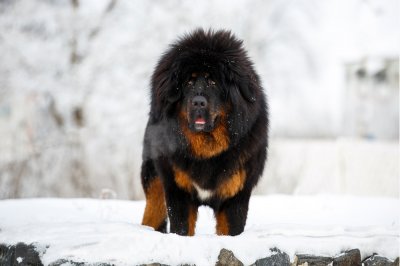
If you think Chow Chows aren’t “lion-like” enough, why not opt for a canine with a real lion’s blood running through its veins? Introducing the Tibetan Mastiff!
Tibetan Mastiffs hailed from the foothills of the Himalayas, where they used to protect Nomadic tribes and their livestock from predators. These vigorous and gigantic canines would fight bears, tigers, wolves, and leopards without fear.
The earliest Chinese reference to the Tibetan Mastiff is in 1,121 BC, but there are already ancient Egyptian monuments dating back to 3,000 BC that represents the said breed. According to experts, the breed has been around for at least 6,000 years and is thought to be the ancestor to all giant breeds, including the Great Dane and St. Bernard.
The Tibetan Mastiff was later introduced to Europe by Alexander the Great on his return from India. He used his mastiffs for protection against lions and elephants, while the descendants of his dogs have a long and glorious history as Roman war dogs. On the other hand, many of the Tibetan Mastiffs in America are descendants of the dogs given by the Dalai Lama to the US President Dwight Eisenhower.
Anyone who prefers a tenacious and hulking canine with seemingly unlimited stamina would find the Tibetan Mastiff the perfect companion. Despite his inherent strength and daunting physique, the Tibetan Mastiff isn’t bred to be an aggressive dog who randomly attacks, but instead, as a devoted family member who, if challenged, would put his life on the line to protect those he loves. You can’t expect that he will laze on your lap, but he can be as affectionate as any other pet.
- Then again, only the elite can afford to get a Tibetan Mastiff. The most expensive Tibetan Mastiff fetched nearly $2 million a pup. Not to mention how much its food costs per week.
- Weight: 72 – 113 kg (male), 54 – 73 (female)
- Height: 66 – 76 cm (male), 61 – 71 cm (female)
- Temperament: regal, vigilant, and protective
- Lifespan: 12 – 15 years
9. Lhasa Apso
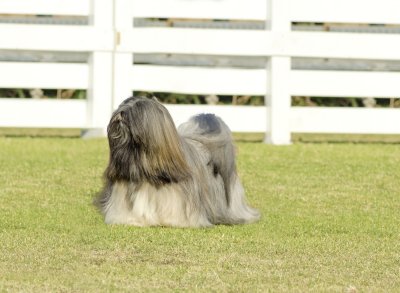
The Lhasa Apso is a small, aristocratic dog known for its lavish coat that drapes to the floor. The breed hailed from China’s Tibetan region, where it was known as Abso Seng Kye, which translates to “the Bark Lion Sentinel Dog.” In some Western countries, the pooch is called Tibet lion dog because of its long mane and coat color.
While Tibetan Mastiffs guarded reclusive monasteries and villages outdoors, Lhasa Apsos did sentry duty indoors. The latter was bred for intelligence and a sense of hearing that surpasses most dog breeds; thus, making them perfect alarms during emergencies. These little lions also have a keen sense of distinguishing a friend from a foe.
Lhasa Apsos were sacred to Buddhist monks, as they believed the souls of lamas and priests were born again as Lhasa Apsos before being reincarnated as humans. We may not agree with this, but we believe these pooches are exceptional and will bring immeasurable joy to their families. The breed is notable for being friendly and comical. They have expressive dark brown eyes that are truly enchanting, as though they are inviting you to talk straight to their souls. But burglars, watch out! These pooches can also be hostile towards shady people.
- Weight: 6.4 – 8.2 kg (male), 5.4 – 6.4 kg (female)
- Height: 25 – 28 cm (both sexes)
- Temperament: independent, assertive, and hostile towards strangers
- Lifespan: 12 – 14 years
10. Chinese Crested
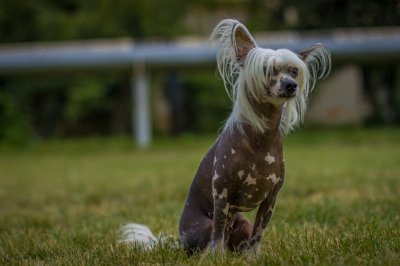
The Chinese Crested may look like it came straight out of an 80s shampoo commercial, but the breed has been around since the 14th century. This cutie pie descended from the now-extinct African hairless dog, which Chinese sailors brought along with them to catch rodents. The dogs’ lack of fur makes them the perfect ratters since they are less likely to contract fleas. Dog fanciers further developed the breed upon their arrival in China.
Chinese Crested dogs, however, aren’t always bare. Those sporting a thick coat of fur are called Powderpuff, and such variant can appear in the same litter with the hairless ones. The Powderpuff Chinese Crested strongly resembles a terrier. Interestingly, both Hairless Chinese Crested and Powderpuff Chinese Crested dogs have sweat glands and elongated paws that look like a hare’s feet.
Still, it seems pop culture prefers the unconventional look of the hairless variant, as always seen on TV. Perhaps, it is because Hairless Chinese Crested dogs come in a kaleidoscope of colors; some even have spots. Also, their skin gets darker during the warmer months.
Unfortunately, the hairless ones are prone to many skin issues, such as acne and sunburn. They are also susceptible to UV rays, cold winds, and allergens from the grass. Simply put, hairless Chinese Crested dogs need clothes and some doggie sunscreen! Be careful not to clothe them with wooly jackets, as they are allergic to such fabric.
Furthermore, the Hairless and Powderpuff Chinese Crested dogs are intelligent to boot. The latter, in particular, are great at performing tricks.
- Weight: 2.3 – 5.4 kg (both sexes)
- Height: 28 – 33 cm (male), 23 - 30 cm (female)
- Temperament: playful, sensitive, and willing to please
- Lifespan: 13 – 15 years
Takeaway
Many of these dogs are ancient breeds that have stood the test of time and served historical figures. China was closed to outsiders for an extended period, so the rest of the world knew little of these dogs. But unlike the yesteryears, it has become common to find these breeds as pets in both China and across the globe. The long and rich histories of these breeds would have been lost due to the culling of pets ordered by the communist leader. We owe it to the dedicated efforts of the dog fanciers at the time. Lastly, Tibet is an integral part of China; thus, it makes the Chow Chow, Tibetan Mastiff, and Lhasa Apso Chinese breeds.
Further reading and references:
- Sixth Tone. Dai Wangyun. 7,000 Years of the Dog: A History of China’s Canine Companions
- Frontiers. Genetic Diversity and Signatures of Selection in 15 Chinese Indigenous Dog Breeds Revealed by Genome-Wide SNPs
- Quartz. Richard Macauley. Dogs were probably invented in China, suggest Chinese scientists